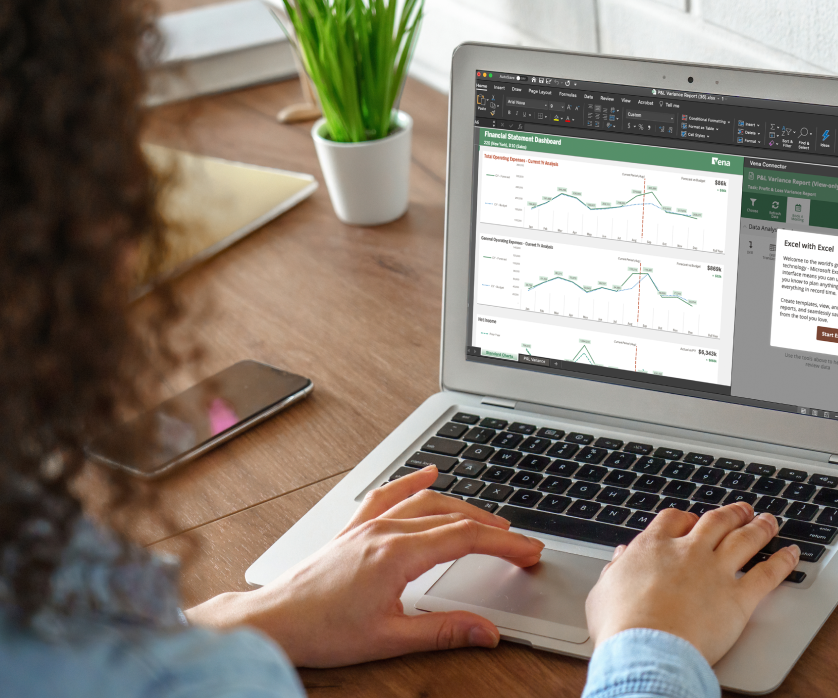Recommended
Are You Using the Right Cash Flow Report?
Are you using the right cash flow report? Help your organization better manage its financial obligations with these tips on creating cash flow statements.

There's no doubt that cash flow is the lifeblood of any business. After all, an organization's cash flow is what keeps it going day in and day out.
Cash flow reports and statements are vital financial documents that allow your company to glean valuable insights that improve financial decisions. These insights are especially important during periods of economic uncertainty when every decision you make could affect your business's future.
With this in mind, we'll talk about what a cash flow statement is, how to read and provide you with tips on creating effective cash flow statements that will help you manage your company's financial obligations more efficiently.
A cash flow statement (CFS) provides a summary of the incoming and outgoing cash of a business. It provides a measure of how a company is placed to fund future operations and pay its debt obligations. The cash flow statement focuses solely on cash transactions offering a clearer picture of a company's liquidity and financial health.
Along with the income statement and balance sheet, a cash flow statement is considered to be one of the three key financial statements.
Since cash flow reports serve various purposes, you must ask yourself, are you using a "one-size-fits-all" cash flow report? Cash flow management best practices recommend organizations use different reports for distinct purposes. Here's how you can ensure you're using the right cash flow report for the correct purposes.
Chances are that your company's finance team already uses monthly cash flow reports in their month end close process. These statements provide parameter-limited data displaying that month's cash flow, with options for consolidation, variances or trends reporting.
Additional viewing options of your organization's monthly cash flow report may offer deeper insights and possibly lead to new and improved business strategies. It's why corporations often use multiple cash flow report templates.
Here are some examples of different types of monthly cash flow reports:
These monthly reports are ideal for monitoring your organization's cash position month-over-month. However, these types of cash flow reports are inadequate for forecasting future performance. For that, you will need cash flow forecasting.
Your company probably already extrapolates data from its monthly cash flow report, balance sheet and profit and loss (P&L) reports to predict your organization's future cash position.
However, manually compiling these datasets to create accurate forecasts is time consuming and error prone.
Instead, automating predictions for future accounts payables and receivables--using data generated from historical trends--will help you gain more accurate insights about your cash flow throughout the entire year.
Different types of future cash flow forecasting include:
A comprehensive and accurate cash flow forecast report is ideal when your organization wants to get detailed views of future performance in advance. It's not great for a big-picture view when needing an at-a-glance report.
Global events of 2020 caused organizations worldwide to realize the need for faster, agile ways to calculate ranges for constantly shifting cash flow scenarios at a moment's notice. At-a-glance cash flow analysis tools deliver these calculations quickly and easily.
Here are three examples of different types of at-a-glance analysis tools:
Driven by prevalent ERP-integrated dashboard solutions, business leaders can immediately view the potential impact of their decisions--enabling critical decision making across the organization.
While several dashboards include a drill-down component, at-a-glance analytics is not the appropriate type of cash flow report to view monthly cash flow variances. To do this, you'll want to turn to a template for monthly cash flow reports.
Here is an example of a hypothetical cash flow statement.
| Example Statement of Cashflow For Company A For The Quarter Ending September 30, 2024. All figures in USD. | |
|---|---|
| Cash Flow Categories | Q1 2024 (USD) |
| Cash Flows from Operating Activities: | |
| Net Income | 40,000 |
| Adjustments to reconcile net income to net cash: | |
| Depreciation | 10,000 |
| Change in Accounts Receivable | (5,000) |
| Change in Inventory | (15,000) |
| Change in Accounts Payable | 5,000 |
| Net Cash Provided by Operating Activities | 35,000 |
| Cash Flows from Investing Activities: | |
| Purchase of Property, Plant, and Equipment | (20,000) |
| Sale of Investments | 10,000 |
| Net Cash Used in Investing Activities | (10,000) |
| Cash Flows from Financing Activities: | |
| Proceeds from Issuance of Stock | 20,000 |
| Dividends Paid | (5,000) |
| Net Cash Provided by Financing Activities | 15,000 |
| Net Increase in Cash | 40,000 |
| Beginning Cash Balance | 10,000 |
| Ending Cash Balance | 50,000 |
Experienced accountants, bookkeepers and financial advisors regularly work with cash flow statements and cash conversion cycles. They are familiar with how to prepare and analyze these statements.
A cash flow report generally includes the following components:
These line items on the cash flow report include activities related to the core business. This section calculates the cash flow from a business's provision of products or services. Examples of operating activities include:
These include cash flow from acquiring and disposing of long-term investments and other assets not included in cash equivalents. These may denote long-term investments in the organization's growth. For example, selling or purchasing physical property, such as vehicles or real estate, and non-physical property, such as patents.
Cash flow reporting related to financing activities commonly represent cash from banks or investors, buying and issuing back shares and dividend payments. Whether paying interest to service debt, raising a loan or distributing dividends, these transactions fall within the financing activities section of the cash flow report.
This part is not included in the main sections, but is crucial for understanding the full picture a company's financial activities.
There are two ways to calculate cash flow. You can learn more about how cash flow can be calculated with the direct and indirect method in our dedicated article. The direct method can be used by small businesses that prefer to use the cash basis accounting method. The indirect method is calculated by adjusting net income, it takes into account differences that arise from non-cash transactions.
There are many drivers of cashflow - these are line items that affect the day to day running of a business. These drivers can be categorized as inflows, and outflows. Here is a table that outlines a clear distinction between the two:
| Incoming (Inflows) | Outgoing (Outflows) |
| Sales Revenue | Operating Expenses |
| Accounts Receivable | Asset Purchases |
| Asset Sales | Loan Repayments |
| Investment Income | Taxes and Fees |
A cash flow report is one of the multiple resources your organization can use to make vital decisions that will guide your company's next steps. That's why it's important to use cash flow management software that helps you prepare for any scenario.
You need a solution that easily integrates with your existing software systems, is simple to use and enables you to capture, create and analyze cash flow statements. This will not only save you time and reduce the risk of human error, it will also help your organization categorize and sort cash flow types, ensuring you're always using the correct cash flow report.
A cash flow statement doesn't account for future obligations like undelivered orders or upcoming contracts.
Additionally, it can be manipulated through the timing of revenue, expenses, and debt transactions, presenting a potentially misleading picture of financial health.
Therefore it's vital that the Cash Flow Statement be used in in-conjunction with the Income Statement and Balance Sheet.
Download our free driver-based planning template. It's designed to help track primacy drivers and lets you assess the three main financial statements - the income statement, balance sheet and cash flow statement.


Grow Your Career With Access to Free CPE/CPD Courses & Certifications.
Learn MoreLayfong Vong is Senior Manager, Treasury at Vena. CFA-certified with 10+ years of experience in finance and treasury, she’s responsible for leading Vena’s Treasury team, providing innovative solutions for cash forecasting optimization, financial risk management, working capital management and more. Layfong is dedicated to finding creative new ways to add value and efficiency to her role and is passionate about sharing these learnings and best practices with other finance executives to help them achieve their personal, professional and business goals.

